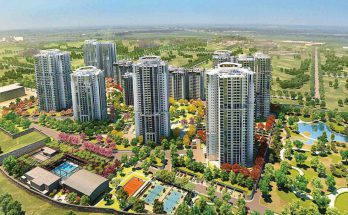The real estate market in India had a difficult year in 2019 across many aspects. The funding crisis loomed large for many firms and the situation worsened with the economic slowdown resulting in a reduction in housing demand. The RERA and GST fallouts were felt heavily in 2019, with many investors choosing other investment options and shying away from putting their money into real estate. Overall an estimated 5 lakh housing units are lying unsold, even though there is a need for housing units in the country. But towards the end of the year, there was a slight uptick in the market sentiment especially with a few cities reporting a renewed interest from buyers for completed housing units as opposed to under-construction ones.
Housing Market
Going forward into 2020, the housing market looks to gain on 2 angles – ready-to-move-in units and units below Rs 50 lakhs. These two categories of housing units are more likely to see the higher movement of stock than the others. Another factor that is also becoming a strong point for buyers is the infrastructure of the location. This was significantly evident in Gurugram once the Dwaraka flyover opened and the area saw an immediate uptick in housing unit demand. The housing unit buyers are also not investors anymore and this trend is set to continue in 2020 as well with more end-users purchasing homes as opposed to investors.
The affordable housing market is poised for larger growth numbers with more builders leaning towards creating these homes. Also, the lower GST and RERA protection are moving more buyers towards this segment of homes. The luxury housing market is likely to remain stagnant if not in decline during 2020.
Commercial Market
The Grade A commercial market had seen a positive trend in 2019 and this is likely to continue and grow in 2020. The entire investor base seems to have moved from housing markets to commercial building investments. The cities that have shown a significant rise in demand for Grade A commercial real estate are Hyderabad and Pune. Rentals are at an all-time high for commercial real estate thus bringing in more investors to space. There has a been a spurt in space demand owing to many international technology companies putting up their Research and Development arms in India.
Co-Working Market
The co-working market has boomed in 2019 and continues to show great interest from investors and consumers alike. The models have been appreciated by consumers and there is a growing demand for more co-working spaces across Tier 1 and Tier 2 cities in India. The co-working market in India is estimated to be the second-largest market in the world after China and is poised to see double-digit growth in every quarter of 2020.
Co-living Market
The co-living market has grown on two segments in the cities – for singles and for senior citizens. The senior citizen market has seen a spike in demand in major cities for assisted living facilities. The rentals for these spaces are also high and the market is still in short supply hence giving investors more opportunities to develop spaces targeted at senior citizens. The co-living spaces in the forms of fully operations PG facilities have been creeping into the cities with companies like Zolo Stays, OYO life and Nestaway making big in-roads into major cities like Mumbai, Bangalore, Hyderabad, and Chennai.
Real Estate Investments
Blackstone introduced the first REIT fund to the Indian market and has met with a good response. With an estimated market size of Rs 1.5 lakh crores, the Indian investor will be changing the way he invests in real estate in 2020. The REITs at the moment, yield higher income in comparison to the traditional housing market investments, thus making them more attractive for the investors in 2020.
The real estate market In India is set to change from the old traditions to a more new-age mode of investment. The path for this was laid out better in 2019 and the outlook for the real estate market in India 2020 is trending in this direction.




